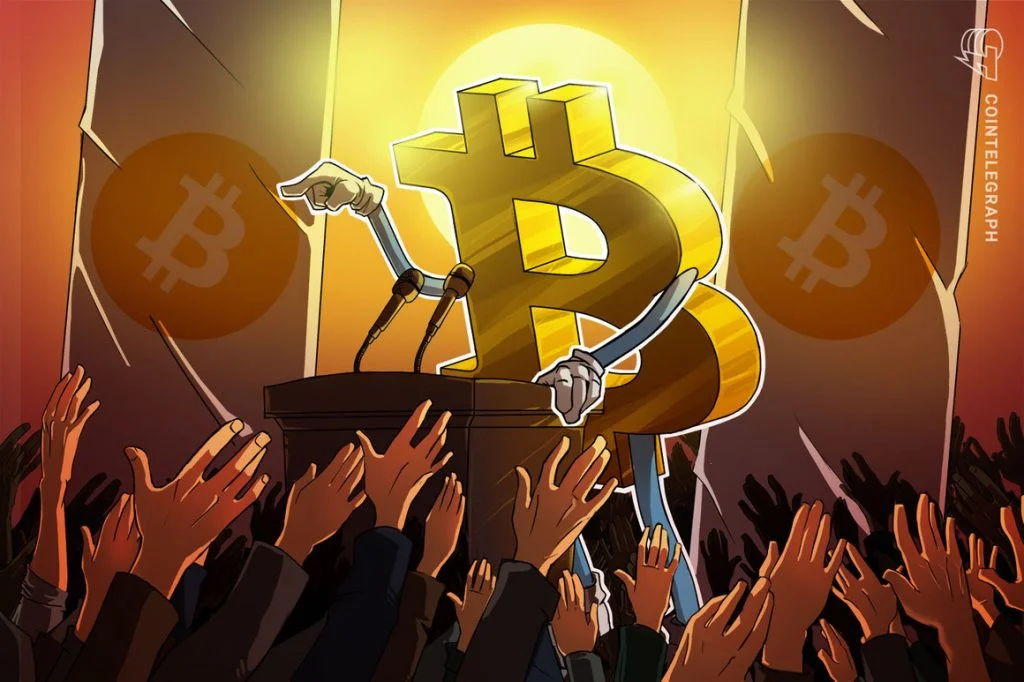Jerome Powell, Federal Reserve Chairman, said on Monday that, even as a Central Bank studies its own potential expenses and benefits from the digital dollar, the US public must understand the risks behind BTC and other cryptocurrencies.
Powell said that the Fed would rather call cryptoactive assets “The fundamental function of a currency is because its volatility undermines its ability to store value. “They are highly volatile, see Bitcoin, and thus not very good as a value store, “Powell spoke at the Bank for International Settlements’ virtual summit. “This is a more assest on extrapolation . They are not used as a means of debt to be precise, as a result. they’re also not compulsorily in use as a means of exchange. It’s mainly a substitute for something valuable or appreciative like gold rather than for the dollar.” Bitcoin has risen almost ten times over a year ago, and on 22/03/2021, it was about $57,000.
In March 2020 this is up from $5,830. It is often seen in the context of inflation hedge, and there has been an increase in fear of inflation as the Fed has maintained an interest rate of close to zero in the past year. Furthermore, the Fed purchases Treasuries and mortgage-supported securities injecting $120 billion into the banking system monthly. Although Bitcoin is seldom used in transactions, this may change. Last month, Tesla said he bought $1.5 billion worth of BTC and would soon accept BTC for car payment. Powell said that the Fed is investigating the potential for a digital central bank currency, but added that the Federal Reserve is not yet close to making a decision. “We’re not in a way at this point to try and decide, “He said. He said. “Technology is experimenting.”
But Powell added that the Fed “has an obligation to be on the cutting edge given its critical dollar’s role as the world leading reserve currency “To understand the costs and advantages of a digital CBDC or a central bank. In parallel, Powell said that the Fed did not have to be rushed or “to market first.” Many other central banks, including China, are exploring CBDCs, and some observers are concerned that China is ahead of the U.S.

Powell said the Fed is conducting research through an internal technology lab, as well as through one of MIT’s twelve regional Fed banks, the Federal Reserve Bank of Boston.
“What is the real threshold for us? Does a highly efficient, reliable and innovative payments system want, or need a new digital form of central bank funds to complement?” ” Asked Powell. Digital currencies are at risk and benefit, the chairman of the Fed said. The advantages include a better, more integrated payment system, “While the risks are cyber attacks, laundering and financing of terrorists.
There is also a risk that individuals will be able to electronically maintain a digital currency and thus bypass banks.
“We don’t want to compete for finance with banks, “Powell said that. Powell said.
Ultimately, Powell said Congress should adopt legislation which would allow a CBDC to be created before the Fed. “We wouldn’t do that without Congress support, and I believe that ideally it would be in the form of an authoritative law “Powell said that. Powell said.
The chairman of the Fed also made a number of comments concerning the “stable coins,” “Digital currencies attached to the value of government-supported currencies such as the dollar or the euro. A stablecoin example is Facebook’s Libra, now called Diem. “The potentially quick and widespread use of a global stablecoin, a global currency that is only governed by incentives from a private company, is what the highest level of regulatory expectations will and will deserve, “Powell said. Powell said. “Private stable coins will not be a suitable substitute for a sound central bank monetary system.”
“The potentially quick and widespread use of a global stablecoin, a global currency that is only governed by incentives from a private company, is what the highest level of regulatory expectations will and will deserve, “Powell said. Powell said. “Private stable coins will not be a suitable substitute for a sound central bank monetary system.”

